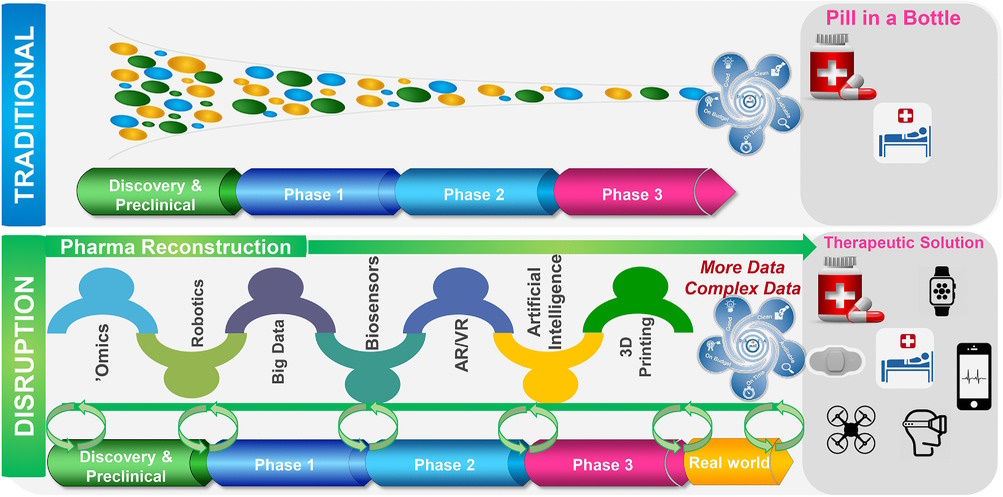DRUGS - REAL WORLD OUTCOME

Drugs real world outcomes: Latest results from PubMed
-
Real-World Evidence for Baricitinib in the Treatment of Rheumatoid Arthritis in Spain: A Systematic Literature Review
CONCLUSION: These results suggest baricitinib is effective in the real-world setting in Spain, with a consistent safety profile, similar to findings reported in clinical studies and in real-world studies conducted in other countries. -
Cardiovascular toxicity induced by immunotherapy in non-small cell lung cancer: a systematic review and meta-analysis of observational studies
CONCLUSIONS: The treatment with ICIs caused a higher rate of CV events compared to non-ICI treatments. Nevertheless, further research is required to elucidate the underlying mechanisms and implications for patient care. This calls for continued research efforts to optimize the cardiovascular health of patients undergoing immunotherapy for lung cancer. -
A comparison of the efficacy and safety of Chinese patent medicine combined with Western medicine for Helicobacter pylori-related gastric ulcer: A systematic review and network meta-analysis
CONCLUSION: Our NMA findings indicate that the combination of WWSC, PWC, WFCT, and KFXS with WM may be more effective and advantageous outcomes compared to other CPMs. Due to the limitations of this study, future research should employ larger sample sizes and multicenter RCTs to conduct real-world clinical studies. -
Investigating the Relationship Between Anti-seizure Medications and Bleeding Disorders: A Comprehensive Review of the Current Literature
Anti-seizure medications (ASMs) are specific types of anticonvulsants used to treat epileptic seizures. However, several studies have shown an association between ASMs and an increased risk of hematological disorders, such as thrombocytopenia, aplastic anemia, and platelet function disorders leading to prolonged bleeding times. This review explores the existing literature on this topic, investigating a wide variety of ASMs, ranging from first-generation medications to newer ones. A comprehensive... -
Real-World and Patient-Reported Outcomes of Dupilumab and Other Biological Drugs for Chronic Obstructive Pulmonary Disease-A Systematic Review
CONCLUSIONS: There are limited data on patients' experience with biological therapies for COPD. While real-world data and PROMs are missing, biases such as a placebo effect must be considered, requiring their incorporation with objective outcomes from prospective controlled trials. -
Exploiting blood-based biomarkers to align preclinical models with human traumatic brain injury
Rodent models are important research tools for studying the pathophysiology of traumatic brain injury (TBI) and developing new therapeutic interventions for this devastating neurological disorder. However, the failure rate for the translation of drugs from animal testing to human treatments for TBI is 100%. While there are several potential explanations for this, previous clinical trials have relied on extrapolation from preclinical studies for critical design considerations, including drug dose... -
Efficacy and Safety of Chlortalidone and Hydrochlorothiazide in Prevention of Cardiovascular Diseases
CONCLUSIONS: CHLOR and HCTZ are comparable in efficacy for prevention cardiovascular diseases, with the only difference being a higher incidence of hypokalemia in patients using CHLOR compared to those using HCTZ. Considering the potential heterogeneity and bias in the analytical studies, these results should be interpreted with caution. -
Antidepressants for pain management in adults with chronic pain: a network meta-analysis
CONCLUSIONS: There is only reliable evidence for duloxetine in the treatment of chronic pain. Duloxetine was moderately efficacious across all outcomes at standard dose. There is also promising evidence for milnacipran, although further high-quality research is needed to be confident in these conclusions. Data for all other antidepressants were of low certainty. However, the findings should not be read as an encouragement to prescribe antidepressants where other non-pharmacological intervention... -
Comparative Cardiovascular Safety of Gonadotropin-releasing Hormone Antagonists and Agonists Among Patients Diagnosed with Prostate Cancer: A Systematic Review and Meta-analysis of Real-world Evidence Studies
CONCLUSIONS AND CLINICAL IMPLICATIONS: Real-world evidence studies indicate that degarelix, compared with GnRH agonists, is associated with a modest increased risk of MACEs, particularly among patients with a history of cardiovascular disease. However, residual confounding due to the treatment of high-risk patients with degarelix may account for these findings. Additional large studies with detailed data on tumor characteristics and cardiovascular risk factors are needed to confirm these... -
Association of Drug-Disease Interactions with Mortality or Readmission in Hospitalised Middle-Aged and Older Adults: A Systematic Review and Meta-Analysis
CONCLUSIONS: Few studies were identified examining the risk of drug-disease interactions and mortality and readmission in hospitalised adults. Most of the identified studies were at risk of bias. There is no universal accepted definition of drug-disease interactions in the literature. Further studies are needed to develop a standardised and accepted definition of these interactions to guide further research in this area. -
Comparative Effectiveness and Safety of Direct Oral Anticoagulants in Low Body Weight Patients with Atrial Fibrillation: A Systematic Review and Meta-analysis
INTRODUCTION: Direct oral anticoagulant (DOAC) agents are established as the anticoagulation strategy of choice for a variety of clinical risks. Despite this, uncertainty still exists with regard to their efficacy and safety for the prevention of stroke and systemic embolism in some patient populations; most notably those with low body weight (LBW) (



